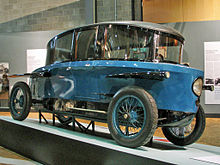
Back Coeficiente de resistencia en automóviles Spanish Коэффициент аэродинамического сопротивления автомобиля Russian Коефіцієнт аеродинамічного опору автомобіля Ukrainian

The drag coefficient is a common measure in automotive design as it pertains to aerodynamics. Drag is a force that acts parallel to and in the same direction as the airflow. The drag coefficient of an automobile measures the way the automobile passes through the surrounding air. When automobile companies design a new vehicle they take into consideration the automobile drag coefficient in addition to the other performance characteristics. Aerodynamic drag increases with the square of speed; therefore it becomes critically important at higher speeds. Reducing the drag coefficient in an automobile improves the performance of the vehicle as it pertains to speed and fuel efficiency.[1] There are many different ways to reduce the drag of a vehicle. A common way to measure the drag of the vehicle is through the drag area.
- ^ Wang, Brian (2009-03-16). "Reducing Drag on Cars and Trucks by 15-18%". Next Big Future. Archived from the original on 2018-01-29. Retrieved 2018-01-28.